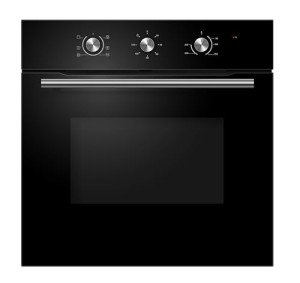The Rise of Built-in Electric Ovens: Enhancing Kitchens with Style and Functionality
As modern-day cooking areas evolve to become more than simply a place for cooking, the need for appliances that effortlessly blend design and function has actually increased. One of the most desired kitchen appliances in contemporary homes is the built-in electric oven. This post looks into the benefits, features, and considerations when picking built-in electric ovens, providing house owners the insights needed to make educated choices.
What is a Built-in Electric Oven?
A built-in electric oven is a home appliance that is set up directly into the kitchen cabinets instead of being free-standing. This design enables a cleaner, more structured appearance in the kitchen. Built-in electric ovens can be put at different heights, offering ergonomic benefits and enhancing availability for various jobs, consisting of baking, broiling, and roasting.
Key Features of Built-in Electric Ovens
Built-in electric ovens are loaded with features developed to elevate cooking experiences. These include:
- Variability in Styles and Sizes: Available in numerous designs (single, double, wall) and sizes, built-in ovens can fit any kitchen design and design.
- Advanced Cooking Technologies: Many models include convection cooking, steam cooking, and precision temperature controls to improve cooking effectiveness.
- User-Friendly Controls: With digital screens and touch controls, built-in ovens enable accurate changes and cooking timers.
- Self-Cleaning Options: Some built-in electric ovens are equipped with self-cleaning cycles that make maintenance a breeze.
- Smart Technology Integration: Modern built-in ovens might feature wise abilities, allowing users to keep track of cooking from another location via smart device apps.
Benefits of Built-in Electric Ovens
- Space Efficiency: Built-in electric ovens conserve floor area, making them ideal for smaller cooking areas where square video is limited. Their design enables optimizing cabinet space above and below.
- Visual Appeal: The sleek and integrated look of built-in ovens matches contemporary kitchen designs, offering a seamless shift between appliances and cabinets.
- Increased Functionality: With different configurations (e.g., double ovens), property owners can prepare multiple meals at various temperature levels at the same time, boosting meal preparation effectiveness.
- Improved Accessibility: Built-in electric ovens can be set up at eye level, making it simpler to examine dishes without flexing down, thereby reducing stress.
- Security: Built-in ovens are typically designed to have strong setup, minimizing the threat of tipping over. In addition, features like cool-to-the-touch doors improve safety, specifically in homes with children.
Choosing the Right Built-in Electric Oven
When selecting the ideal built-in electric oven, different elements must be thought about. Here's a checklist of vital requirements:
- Size and Dimensions: Measure the offered space in the kitchen and guarantee the chosen oven fits properly.
- Capability: Consider the volume of food preparation required for family size or entertaining.
- Cooking Features: Evaluate the particular cooking functions required, like convection modes or additional racks.
- Style Preference: Choose between different styles and surfaces that will match the kitchen's aesthetic.
- Guarantee and Customer Support: Research the manufacturer's service warranty and availability of customer support for upkeep and repairs.
Contrast of Built-in Electric Ovens
| Feature | Single Built-in Oven | Double Built-in Oven |
|---|---|---|
| Capability | 3.0 to 5.0 cu. ft. | 6.0 to 10.0 cu. ft. |
| Cost | Normally lower | Greater due to more functions |
| Cooking Versatility | Restricted to one dish | Can prepare numerous dishes at differing temperatures |
| Energy Efficiency | Generally effective | May use more power due to bigger size |
| Installation Complexity | Much easier | More complex due to extra weight |
Maintenance and Care for Built-in Electric Ovens
To guarantee durability and optimal efficiency, routine upkeep of built-in electric ovens is essential. Here are some pointers for care:
- Regular Cleaning: Wipe down surfaces after each usage to prevent build-up. Usage appropriate cleaners for the oven exterior and interiors.
- Check Seals and Gaskets: Inspect door seals regularly to guarantee they are undamaged to preserve cooking efficiency.
- Adjust the Oven: Check oven temperatures with an oven thermometer to ensure it's cooking at the right temperature.
- Follow the Manufacturer's Guidelines: Adhere to running standards supplied by the maker for safe and reliable usage.
FAQs About Built-in Electric Ovens
Q1: Are electric ovens more energy-efficient than gas ovens?A1: Generally, electric ovens can be more energy-efficient since they heat more uniformly and keep temperature level better once heated up. Nevertheless, built in electric double oven and hob packages can differ based on usage patterns and specific designs. Q2: Can built-in electric ovens be repaired?A2: Yes, built-in electric
ovens can be repaired. Nevertheless, it is suggested to hire specialists for repairs due to the complex setup. Q3: Do built-in ovens take longer to set up compared to freestanding models?A3: Yes, built-in ovens generally need more
complex installation procedures, which may involve cabinetry changes, electrical wiring, and leveling. Q4: What is the typical life expectancy of a built-in electric oven? best integrated oven and hob : A well-kept built-in electric oven can last in between 10 to 15 years.
Built-in electric ovens are transforming kitchen areas by combining performance, visual appeal, and advanced technology. By considering the features and advantages
, homeowners can make an educated option for their cooking requirements. As cooking trends shift towards more integrated designs, the built-in electric oven continues to be a staple in modern-day kitchens, offering both style and compound for cooking lovers all over.

